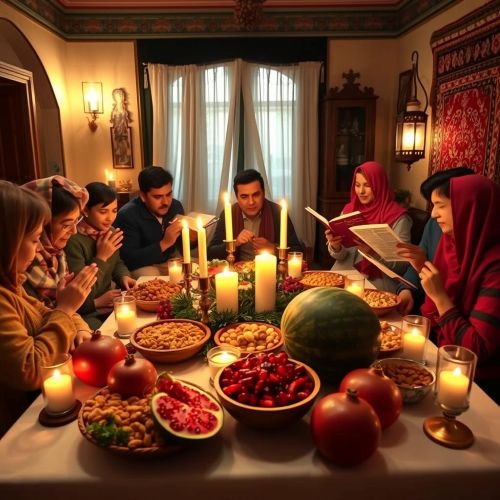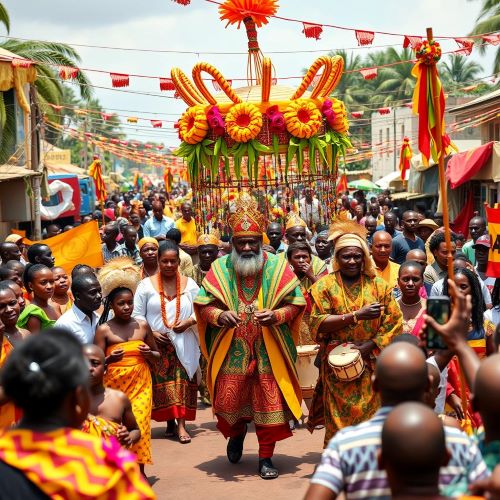Apaturia : Celebration of Kinship
At a glance
| Description | |
|---|---|
| Location | Athens |
| Country | Greece |
| Dedicated To | Zeus Phratrios and Athena Phratria |
| Duration | 3 days |
| Time of Year | October – November |
Introduction
Among the many religious and civic festivals of ancient Greece, Apaturia holds a unique place as a celebration of identity, lineage, and community. Primarily observed in Ionian cities such as Athens during the month of Pyanepsion (October–November), Apaturia was more than a cultural gathering—it was a fundamental institution that helped solidify familial legitimacy and citizenship. Spanning three structured days, this annual festival brought together the phratries, or brotherhoods, that formed the backbone of Greek civic society. At its core, Apaturia reaffirmed the bonds between individuals and their wider social and political networks.
Connection with Mythology
The etymology and mythology surrounding Apaturia are layered and illustrative of Greek narrative tradition. Though commonly associated with the word apatē (ἀπάτη), meaning deceit, many scholars trace its origin instead to homopatoria, denoting “common paternity” or shared lineage. This interpretation aligns with the festival’s purpose: validating ancestry and integrating new generations into their clan’s heritage.
One legendary account connects the festival to a battle between King Melanthus of Athens and Xanthus of Boeotia. According to myth, Melanthus won through a clever deception aided by Dionysus, who appeared disguised in a black goat’s skin. In some versions, the goddess Athena—revered under the title Athena Apaturia—also played a role. These mythic associations emphasized not just trickery but divine endorsement of rightful leadership and communal identity. The involvement of gods like Zeus Phratrios and Athena Phratria in the festival’s rites underscored their roles as protectors of the clans, further reinforcing the divine approval of these social structures.
Main Activities
The Apaturia unfolded over three ceremonial days, each with its own focus and significance, blending solemn ritual with communal joy.
-
Dorpeia (Feast Day): This first day was dedicated to familial fellowship. Families hosted communal dinners where members bonded over food, drink, and storytelling. These gatherings often took place in homes or communal venues, and while no major rituals were performed, the spirit of unity was emphasized.
-
Anarrhysis (Day of Sacrifice): The second day was more formal and centered around religious offerings. Oxen were sacrificed on behalf of the phratries to deities such as Zeus Phratrios and Athena Phratria. This shared ritual not only invoked divine favor but also underscored collective responsibility within the clans.
-
Koureotis (Day of Youth): The most critical and symbolic day, Koureotis was when new male children were formally introduced to the phratry. Fathers or legal guardians publicly presented the children born since the last Apaturia and swore oaths affirming their legitimacy. Their names were then recorded in official registers, granting them recognition as future citizens. Boys nearing adolescence also offered a lock of hair to the gods—a gesture of personal transition—and in some cases, recited poetry as part of their civic initiation.
These events were far more than symbolic rituals. They held legal and political weight, marking an individual’s official entry into Athenian society and establishing the grounds for rights such as property inheritance, civic participation, and military duty.
Importance in Cultural History
Apaturia was not only a social event but a pillar of Athenian and Ionian political life. In a city-state like Athens, where citizenship was central to identity and status, registering a child with a phratry during Apaturia was an essential step in claiming civic legitimacy. This predated even the reforms of Kleisthenes and continued to play a crucial role in maintaining the integrity of citizen rolls throughout Classical antiquity.
The festival ensured that each generation’s legal and social standing was clearly documented, which helped avoid disputes over inheritance, military service, and public office. It also acted as a milestone in the life of a boy, serving as a first official entry into the complex web of adult responsibilities within the polis.
Moreover, Apaturia reinforced the authority of phratries as the basic social units of Greek society. These brotherhoods weren’t just kin-based; they were political and religious institutions with duties and influence. Through rituals performed during Apaturia, the collective affirmed its structure and cohesion, making the festival a linchpin in the functioning of Greek civic life.
Need a place to stay? Book your hotel room now!
International Appeal
Unlike grand pan-Hellenic festivals such as the Olympic Games or the Eleusinian Mysteries, Apaturia was not designed to attract foreigners or widespread spectatorship. Its rituals were deeply personal and internal to the phratries, which meant its reach remained local. Cities like Ephesus and Colophon notably did not observe the festival, highlighting its more regional character.
However, its underlying principles—formal rites of passage, the affirmation of social bonds, and the ritual recognition of family and ancestry—are universally resonant. In modern terms, the Apaturia bears resemblance to various global customs such as baptisms, bar mitzvahs, and coming-of-age ceremonies, all of which mark the transition from one social status to another within a structured community.
Today, scholars and cultural enthusiasts look to Apaturia to better understand the fabric of ancient Greek civic life. Reenactments, museum exhibitions, and academic symposia help revive its memory, offering insights into how ancient communities built identity, preserved continuity, and celebrated collective belonging.
In a time when society is increasingly defined by digital interactions and fragmented relationships, the Apaturia offers a poignant reminder of the power and necessity of communal rituals. Its enduring legacy lies not in spectacle but in the quiet strength of shared roots and mutual recognition.
Source
Apaturia – Wikipedia. (n.d.). Retrieved from https://en.wikipedia.org/wiki/Apaturia
Apaturia | Ancient Greek, Athenian, Rituals – Britannica. (2025, June 20). Retrieved from https://www.britannica.com/topic/Apaturia
Greek Festivals — The Apaturia (Smith’s Dictionary, 1875). (2020, May 30). Retrieved from https://penelope.uchicago.edu/Thayer/E/Roman/Texts/secondary/SMIGRA*/Apaturia.html
Apatouria – Hellenion. (n.d.). Retrieved from https://www.hellenion.org/festivals/apatouria/
Truth, lies and the Apaturia – Arcus Atlantis. (n.d.). Retrieved from https://www.arcus-atlantis.org.uk/atlantis/truth-lies-apaturia.html
Athenian festivals – Wikipedia. (2010, April 30). Retrieved from https://en.wikipedia.org/wiki/Athenian_festivals
Frequently Asked Questions
Lorem ipsum dolor sit amet, consectetur adipiscing?
Lorem ipsum dolor sit amet, consectetur adipiscing elit. Praesent convallis vestibulum justo, ac tincidunt nunc vehicula quis. Nullam id dolor quis orci malesuada feugiat. Curabitur aliquet libero at urna ullamcorper, ac ultricies nulla dapibus.
Lorem ipsum dolor sit amet, consectetur adipiscing?
Lorem ipsum dolor sit amet, consectetur adipiscing elit. Praesent convallis vestibulum justo, ac tincidunt nunc vehicula quis. Nullam id dolor quis orci malesuada feugiat. Curabitur aliquet libero at urna ullamcorper, ac ultricies nulla dapibus.
Lorem ipsum dolor sit amet, consectetur adipiscing?
Lorem ipsum dolor sit amet, consectetur adipiscing elit. Praesent convallis vestibulum justo, ac tincidunt nunc vehicula quis. Nullam id dolor quis orci malesuada feugiat. Curabitur aliquet libero at urna ullamcorper, ac ultricies nulla dapibus.
Lorem ipsum dolor sit amet, consectetur adipiscing?
Lorem ipsum dolor sit amet, consectetur adipiscing elit. Praesent convallis vestibulum justo, ac tincidunt nunc vehicula quis. Nullam id dolor quis orci malesuada feugiat. Curabitur aliquet libero at urna ullamcorper, ac ultricies nulla dapibus.
Lorem ipsum dolor sit amet, consectetur adipiscing?
Lorem ipsum dolor sit amet, consectetur adipiscing elit. Praesent convallis vestibulum justo, ac tincidunt nunc vehicula quis. Nullam id dolor quis orci malesuada feugiat. Curabitur aliquet libero at urna ullamcorper, ac ultricies nulla dapibus.









